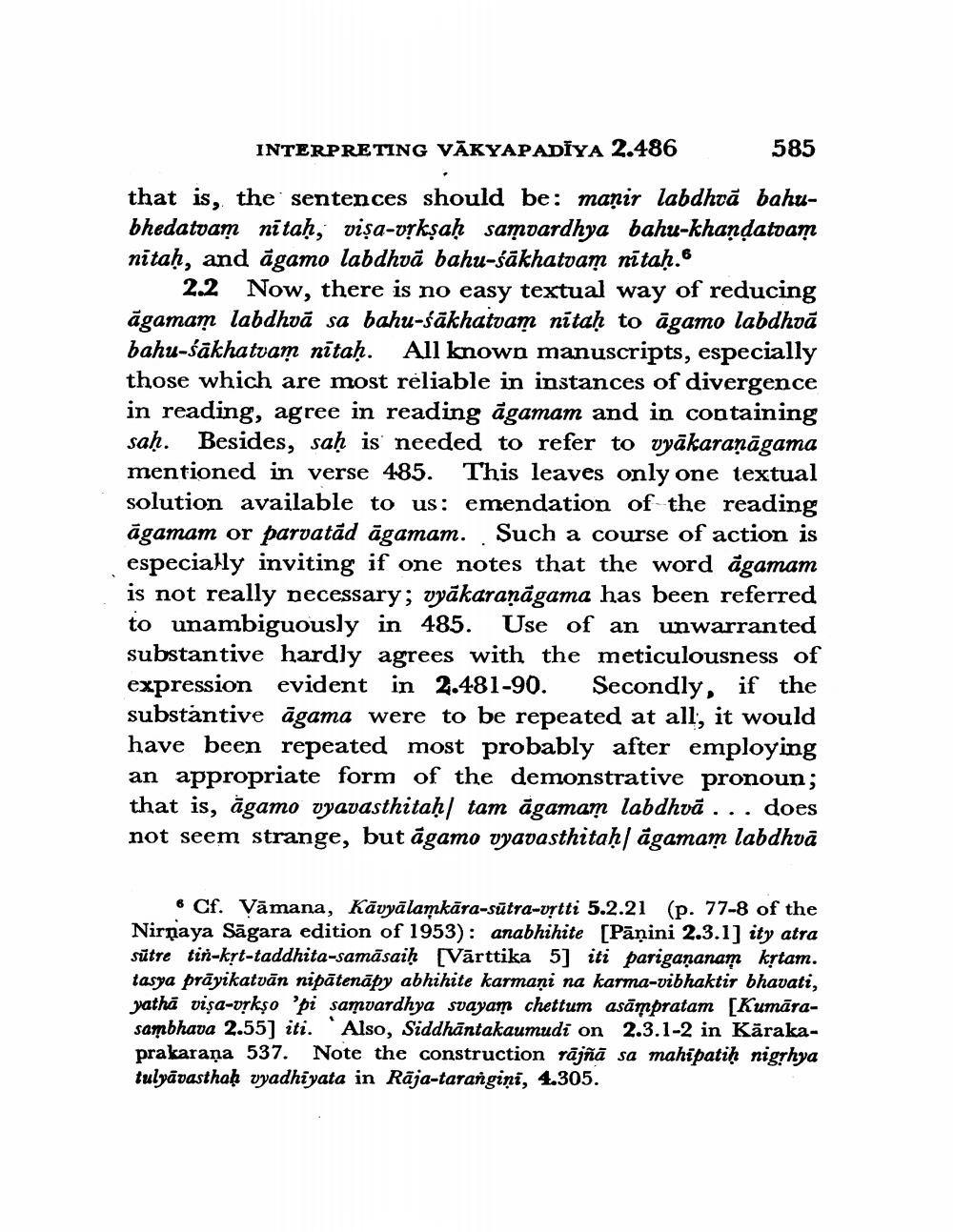Book Title: Interpreting Vakyapadiya Historically Author(s): Ashok Aklujkar Publisher: Ashok Aklujkar View full book textPage 5
________________ INTERPRETING VAKYAPADIYA 2.486 that is, the sentences should be: manir labdhva bahubhedatvam nitaḥ, visa-vrkṣaḥ samvardhya bahu-khaṇḍatoam nitaḥ, and agamo labdhva bahu-sakhatvam nītaḥ.6 585 2.2 Now, there is no easy textual way of reducing agamam labdhva sa bahu-sakhatvam nitah to āgamo labdhvā bahu-sakhatvam nitaḥ. All known manuscripts, especially those which are most reliable in instances of divergence in reading, agree in reading agamam and in containing sah. Besides, saḥ is needed to refer to vyakaraṇāgama mentioned in verse 485. This leaves only one textual solution available to us: emendation of the reading agamam or parvatad āgamam. Such a course of action is especially inviting if one notes that the word agamam is not really necessary; vyākaraṇāgama has been referred to unambiguously in 485. Use of an unwarranted substantive hardly agrees with the meticulousness of expression evident in 2.481-90. Secondly, if the substantive agama were to be repeated at all, it would have been repeated most probably after employing an appropriate form of the demonstrative pronoun; that is, agamo vyavasthitaḥ tam agamam labdhvā... does not seem strange, but agamo vyavasthitaḥ| agamam labdhvā Cf. Vamana, Kāvyālamkāra-sūtra-vṛtti 5.2.21 (p. 77-8 of the Nirnaya Sagara edition of 1953): anabhihite [Panini 2.3.1] ity atra sütre tin-kṛt-taddhita-samāsaiḥ [Varttika 5] iti parigaṇanam kṛtam. tasya prāyikatvān nipātenāpy abhihite karmani na karma-vibhaktir bhavati, yathā visa-vṛkso 'pi samvardhya svayam chettum asāmpratam [Kumārasambhava 2.55] iti. Also, Siddhantakaumudi on 2.3.1-2 in Kärakaprakarana 537. Note the construction rajñā sa mahipatiḥ nigrhya tulyavasthaḥ vyadhiyata in Raja-tarangini, 4.305.Page Navigation
1 ... 3 4 5 6 7 8 9 10 11 12 13 14 15 16 17 18 19 20 21
